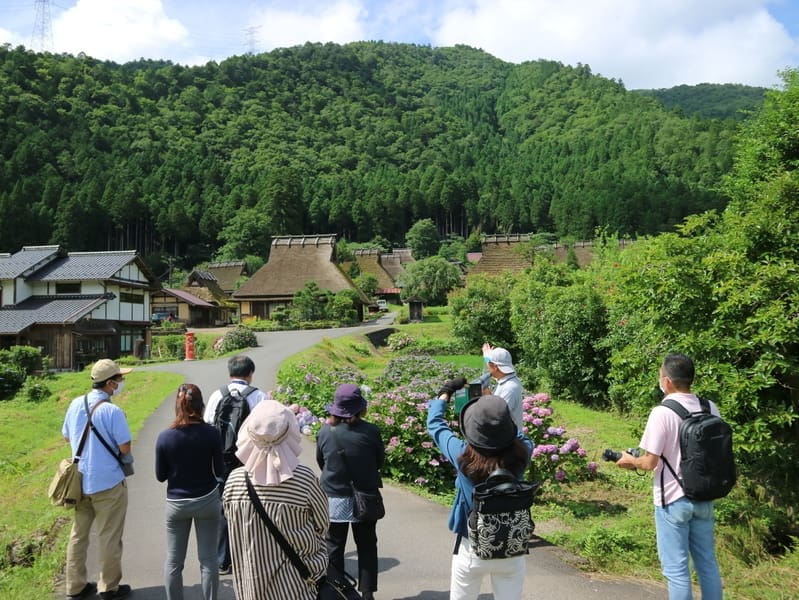Contents
- 1 Discover Miyama Village: A Timeless Rural Escape
- 2 Reach Miyama Village: Travel Options and How to Access
- 3 Savor Local Flavors: Cuisine and Dining in Miyama Village
- 4 Immerse in Seasonal Beauty and Village Events
- 5 Discover Nearby Attractions and Outdoor Adventures
- 6 Support Miyama’s Sustainable Spirit: Community, Conservation, and Responsible Tourism
- 7 Conclusion
- 8 FAQs
- 8.1 1. How do I get to Miyama Village from Kyoto as an English-speaking traveler?
- 8.2 2. What kinds of accommodation are available in Miyama Village?
- 8.3 3. What activities or experiences can I join as a visitor?
- 8.4 4. Is Miyama Village suitable for travelers with dietary restrictions or accessibility needs?
- 8.5 5. When is the best time to visit Miyama Village, and are there any special events?
Imagine standing in a quiet village where every rooftop is made of thick, golden thatch, and the only sounds are the whisper of the wind and the distant laughter of local farmers. Tucked in the mountains of Kyoto, Miyama Village isn’t just a destination—it’s a rare glimpse into rural Japan as it has been for centuries.
For travelers searching beyond the usual shrines and city crowds, Miyama offers preserved kayabuki homes, hands-on workshops, and seasonal flavors that reveal real village life. Curious how to get there, what makes its thatched roof heritage so special, or how to actually stay in a village farmhouse?
This guide will walk you through everything you need to know, from authentic experiences to eco-friendly travel tips, so you can discover Miyama Village like an insider. Let’s explore a side of Kyoto you never knew existed.
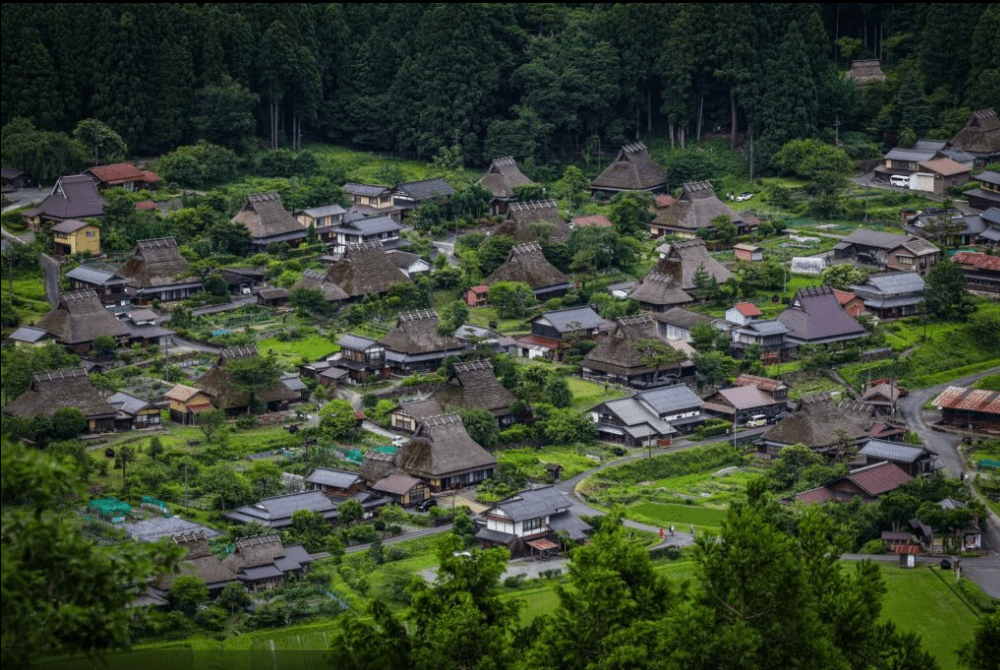
Discover Miyama Village: A Timeless Rural Escape
Deep in the lush mountains of central Kyoto Prefecture, Miyama Village stands as an untouched gem of rural Japan. Often called the quintessential thatched roof village in Kyoto, Miyama captivates visitors with its cluster of beautifully preserved kayabuki farmhouses, known for their iconic steep, thatched roofs, framed by rolling hills and gentle rivers.
Wandering through the main village, you’ll sense something rare: a tranquil, authentic atmosphere that feels worlds away from the bustling city life of Kyoto or Osaka. The area’s distinctive kayabuki homes—some centuries old—line narrow lanes surrounded by fields, forests, and mountain peaks, preserving a nostalgic sense of traditional Japanese life.
Unlike many rural areas shaped by modern development, Miyama Village maintains its rural village charm and actively safeguards its cultural heritage. The locals, most of whom are multi-generational residents, embrace traditions rooted in farming, craftsmanship, and harmonious living with nature, offering visitors a genuine window into the region’s enduring culture.
This commitment to authenticity is why Miyama Village, Kyoto, is celebrated among both Japanese and international travelers as the premier destination for rural Kyoto travel and eco tourism in Kyoto. Visitors can not only enjoy a picturesque aesthetic, but also directly engage with the community—whether staying overnight in a traditional guesthouse, sampling local dishes, or learning from the very people who care for these historic homes.
An overnight stay in Miyama’s rustic village ambience allows you to slow down, breathe in the fresh air of the countryside, and savor the slower rhythms of rural life rarely found in crowded tourist hotspots. If you’re searching for a true thatched-roof village Japan experience, Miyama is the place where timeless traditions and nature blend seamlessly, providing an unforgettable retreat.
Reach Miyama Village: Travel Options and How to Access

Getting to Miyama Village from Kyoto is straightforward, but planning ensures a smooth and enjoyable rural adventure. The main access point is via public transport: take the JR Sagano Line from Kyoto Station to Hiyoshi Station—a scenic ride through forests and mountains that takes about 70 minutes.
From Hiyoshi Station, travelers can board a Nantan bus bound for Miyama’s main village area. Keep in mind that Nantan buses are infrequent (departing roughly every 2–3 hours), so be sure to check the current schedule ahead of your journey. Use local guides like Miyama Official Tourism Access Guide or Kyoto to Miyama Village transport options for accurate timetable updates, fares, and service notices.
If you’re driving, the trip from downtown Kyoto or Kyoto City’s center is about 90 minutes by rental car, following the Kyoto-Jukan Expressway to the Hiyoshi exit. Parking is available near the main thatched-roof village, with clearly marked lots for visitors; this option is especially convenient for families or groups looking to explore at their own pace.
For adventurous souls seeking a scenic approach, consider taking the mountain route via Takao. This winding drive leads through breathtaking mountain landscapes and quiet countryside, ideal in the autumn when foliage ignites the hillsides with color.
While signage in the area has improved, English information can be limited in certain locations, especially for local buses and village maps. To avoid confusion, print out directions or save offline maps before arriving. Outside of major tourist facilities, staff and bus drivers may have limited English ability, but pointing to your destination (or showing a photo of the village) is an effective communication strategy.
When you arrive, consider renting a bicycle near the village for a leisurely ride around the main routes and quieter hamlets. Bike rental outlets generally provide maps and essential information in both Japanese and English, making it easy to explore Miyama’s peaceful streets and rural scenery at your own pace.
Lastly, visitors with accessibility needs should be aware that while some guesthouses and main attractions are wheelchair-friendly, the hilly terrain and uneven roads common in rural Kyoto prefecture can present challenges. Contact your accommodation or the local tourism association in advance to discuss mobility options and specific requirements for your visit.
Explore the Heart: Kayabuki-no-Sato and Thatched Roof Heritage
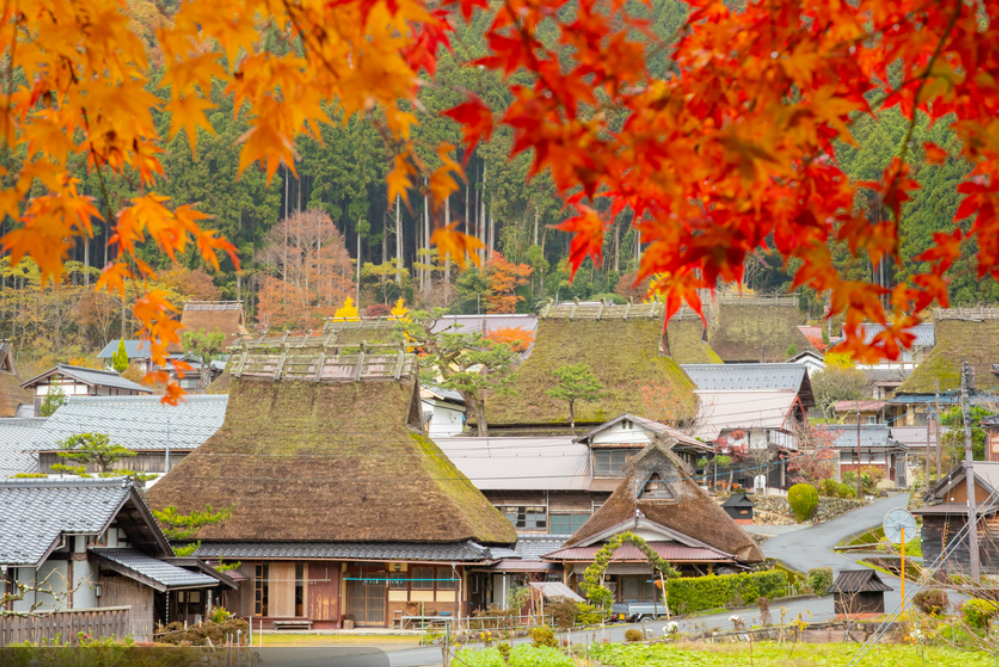
Nestled amid central Kyoto’s mountains, Kayabuki-no-Sato is Miyama Village’s most iconic locale, famous for its stunning collection of kayabuki (thatched roof) houses. These traditional Japanese folk houses—called kayabuki—define the nostalgic landscape, easily setting Miyama apart from other rural villages in Japan.
Kayabuki houses feature thick roofs, artfully layered with bundles of local pampas grass. This design isn’t just beautiful; it provides remarkable insulation against both snowy winters and humid summers, harnessing the great nature for comfort before modern amenities existed.
One of Miyama’s unique qualities lies in its living traditions—many thatched-roof homes are still used as residential dwellings by locals, not simply as museum pieces. Residents gather every two decades for “yui,” a community re-thatching event, preserving skills handed down for generations.
While other thatched roof villages in Japan—like the UNESCO-listed Shirakawa-go and Gokayama thatched villages—draw crowds with dramatic clusters of farmhouses, Miyama’s kayabuki homes retain a quieter, more intimate countryside vibe. Compared to Shirakawa-go, where many houses function solely as attractions, Miyama’s main village blends historic homes and daily local life, offering visitors a more authentic feel.
For those curious about the craft, the Thatched Roof Museum (Kayabuki-no-Sato Folk Museum) opens its doors to visitors. You can see up close the intricate structure of these wooden homes and learn how materials like bamboo, straw, and natural rope create durable, fire-resistant roofs. Many private homes in the roof village also open for public tours at certain times, giving an unusually personal look into traditional Japanese architecture.
Miyama’s commitment to these time-honored building practices, combined with its serene mountain scenery and deep community spirit, makes it a rare example of rural Japan where tradition is an active part of everyday life.
Experience Authentic Village Life: Workshops, Homestays, and Local Encounters
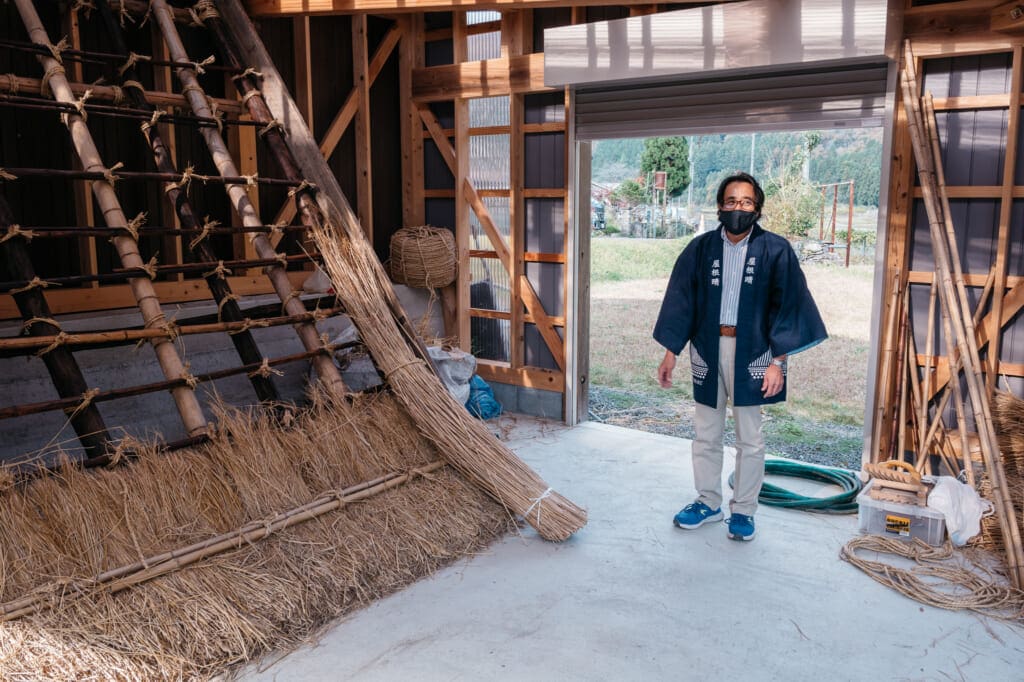
Miyama Village welcomes visitors to step into the rhythm of rural Japanese life through hands-on workshops, authentic homestays, and immersive encounters with residents. This isn’t just sightseeing—it’s a chance to be part of Miyama’s living culture.
A favorite starting point is the array of traditional workshops scattered throughout the village. You can try your hand at indigo dyeing—a centuries-old craft—by joining a session at the renowned Little Indigo Museum, where artisans guide you in creating naturally dyed textiles using plant-based methods. If you’re drawn to culinary customs, sign up for a soba noodle-making class or learn straw craft techniques that rural Japanese communities have perfected over generations. Typical workshop fees range from 2,000 to 5,000 yen, and most experiences last one to two hours. To book these unique activities, check out Book traditional workshops in Miyama Village for schedules, English support, and reservation tips.
Homestay experiences in Miyama give visitors an intimate look at daily life inside traditional thatched-roof homes. The minshuku guesthouses—family-run, often within heritage farmhouses—offer overnight stays with futon beds on tatami floors, home-cooked meals using local produce, and the warm hospitality of residents. Booking is easy even for non-Japanese speakers: several minshuku and farm stays cater to international guests, often with staff who can assist in basic English via their websites or third-party platforms. Rooms typically cost between 8,000 and 15,000 yen per night, including dinner and breakfast.
Personal interactions are at the heart of the village’s charm. You might join locals in harvesting crops, participate in the seasonal rhythm of the countryside, or share stories over an irori (open hearth) dinner. Highlights include artisan studios where you can chat with craftspeople, or visit the atmospheric Little Indigo Museum to discover contemporary interpretations of age-old techniques.
For more ways to connect, check the village’s tourism centers and online portals, which can help schedule farm stays, arrange English-friendly workshops, or tailor itineraries based on your interests and comfort level. Miyama’s hands-on experiences and sincere exchanges with locals create unforgettable memories, bridging visitors with the rich culture and daily traditions of rural Kyoto.
Savor Local Flavors: Cuisine and Dining in Miyama Village

Miyama Village isn’t just a visual delight—it’s also a treat for your taste buds, offering a memorable window into rural Japanese cuisine. Local eateries and minshuku accommodations celebrate the region’s bounty with seasonal dishes that have been enjoyed by residents for generations. The traditional architecture of the thatched roof houses adds to the rustic atmosphere, making every meal an immersive experience.
Springtime brings yomogi mochi, a soft rice cake infused with mugwort, enjoyed fresh from village kitchens. In summer, rivers teem with ayu, or sweetfish, which is expertly grilled over charcoal and served simply with salt—a must-try local delicacy, especially if you visit during the fishing season. Hearty miso nabe (a nourishing hotpot) and handmade soba noodles are village staples throughout autumn and winter, with root vegetables and wild mountain greens adding depth of flavor depending on the harvest. Many minshuku and guesthouses serve these dishes, often on tatami floors for an immersive dining experience.
For visitors with dietary needs, some local restaurants and lodges offer vegetarian meal sets focusing on mountain vegetables and tofu. If you have allergies or other requirements, calling ahead or notifying your accommodation during booking is best, as rural cafes may not always carry special ingredients. The Miyama Folk Museum also highlights the region’s rich culinary traditions and local treasures.
Miyama is also home to several small eateries and countryside izakayas. Some recommended options include quaint inns where guests can enjoy a set meal featuring village-grown rice, local miso, and fresh trout. Don’t miss the chance to sample locally brewed sake or seasonal craft beverages, which pair perfectly with mountain fare. Meals for a typical lunch usually range from 1,000 to 2,500 yen per person, while dinner at lodges or guesthouses often includes multiple courses and costs between 3,500 and 7,000 yen, usually by reservation.
For a curated list of places to eat, opening hours, and reservation advice, explore the Local restaurant guide for Miyama Village. You’ll find options ranging from family-run ryokan to rustic cafes with views of thatched roofs and verdant rice paddies, making your stay in this historic town even more enjoyable.
Immerse in Seasonal Beauty and Village Events
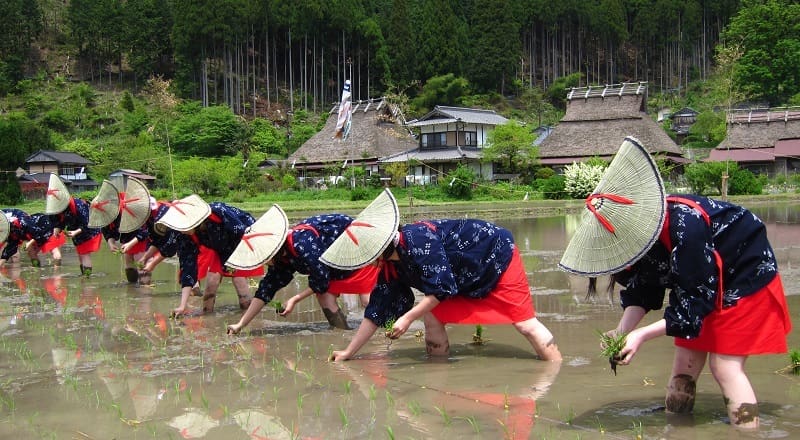
Miyama Village shifts its personality dramatically with each season, making any time of year a unique experience in rural Kyoto Prefecture. The scenery—rolling mountains, rustic thatched-roof villages, and flowering valleys—offers something new for nature lovers and photographers every few months. This historic town is a treasure trove of traditional architecture and local culture.
Spring arrives with a gentle blush of cherry blossoms, transforming the kayabuki cluster into a pastel wonderland. This is a favorite season for visitors seeking a peaceful picnic beneath the blooming trees or for capturing the iconic view of thatched roofs dusted in petals, with almost no crowds compared to popular Kyoto city spots. The beautiful kayabuki houses are particularly stunning during this time.
As summer unfolds, wildflowers fill the meadows and butterflies drift above rice paddies. The longer daylight invites strolls along the Yura River or gentle hikes into the lush Ashiu forest, where you might spot deer grazing near ancient wooden homes. Outdoor activities abound, making it an ideal time for families and adventurers alike.
Autumn is arguably the most photogenic season. The mountains surrounding Miyama Village erupt in crimson and gold, making the rustic village ambience even more postcard-perfect. During this season, local festivals celebrate the autumn harvest, with village residents showcasing folk dances, local dishes, and crafts, contributing to the area’s rich cultural tapestry.
Winter cloaks Miyama in deep tranquility. Thick snowfall covers the farmhouses’ steep thatched roofs and lanes, turning the village into a serene, almost mystical landscape. The highlight is the annual Miyama Snow Lantern Festival, usually held in January or February. Hundreds of hand-carved snow lanterns glow around the thatched houses, creating a magical evening scene that draws visitors and locals alike. Don’t forget your camera—this event is a dream for photographers!
Information about annual events and the best times to visit Miyama Village is released on tourism sites and event guides. Planning your trip around these festivals or seasonal attractions lets you experience the full beauty and traditions of this rural hamlet, offering sights and stories you won’t encounter elsewhere in Kyoto’s countryside.
Discover Nearby Attractions and Outdoor Adventures
Beyond Miyama Village’s picturesque thatched roof houses and tranquil lanes, a world of rural adventure and scenic wonder awaits in the surrounding Kyoto Prefecture. Outdoor enthusiasts and nature lovers can explore lush mountain trails that wind through untouched forests, offering sweeping views of rolling hills and the patchwork of farmhouses nestled below.
Walking or cycling along the village’s edge, you’ll find rivers like the Yura, perfect for sweetfish fishing and gentle river rafting in the warmer months. The area also features hidden gems such as serene waterfalls and the vast Ashiu Forest—an ecological treasure managed in part by Kyoto University, home to rare plant varieties and abundant wildlife.
For those craving a closer look at farming life, residents welcome visitors to join hands-on farm experiences or seasonal fruit picking, deepening your connection to the region’s traditions. Wildlife observation is another highlight, with chances to spot native deer, seasonal birds, and even gentle foxes amidst the panoramic countryside.
Cyclists can take advantage of well-marked routes connecting Miyama to neighboring hamlets like Shuzan and Yagi—each offering its own slice of rural Kyoto culture and historic architecture. Local guides often lead walking tours along lesser-known trails between roof villages and ancient temples, offering anecdotes about the area’s heritage and legends.
For a bigger adventure, continue your travels throughout the Kansai region. Find more inspiration on rural Kyoto travel itineraries and Kyoto day trip options by visiting Rural Kyoto travel inspiration, where you’ll discover more unforgettable places to complement your Miyama journey.
Support Miyama’s Sustainable Spirit: Community, Conservation, and Responsible Tourism
Miyama Village is more than an enchanting snapshot of old Japan—it’s a living community deeply invested in conservation and responsible tourism. The village upholds a proud tradition of re-thatching kayabuki roofs, drawing on centuries-old skills and volunteer programs where both residents and longer-stay visitors join together to maintain the beautiful roof farmhouses.
Local sustainability projects are at the heart of daily life—villagers have pioneered waste-reduction initiatives, such as community composting and rigorous recycling, to preserve their pristine landscape. Business owners and accommodation providers, from rustic minshuku to family-run cafes, promote zero-waste practices and source ingredients from nearby farms to support the rural economy.
Visitors can contribute by respecting local etiquette, such as staying on marked trails, minimizing noise, and ensuring that nothing is left behind in natural spaces. Participatory experiences, like seasonal farming activities or learning traditional maintenance at workshops, let you directly engage in the village’s ongoing stewardship.
Efforts are also underway to make Miyama more inclusive. You’ll find a growing number of attractions and guesthouses equipped for visitors with mobility needs, along with English-language signs and guides to ease your stay.
By embracing Miyama’s sustainable spirit, you not only support the well-being of rural Japan but also help ensure this unique cultural landscape lasts for generations to come.
Conclusion
Miyama Village stands out as a living tapestry of old Japan, where thatched rooftops and rural landscapes transport visitors to a quieter, more authentic Kyoto. Whether you seek hands-on workshops, heartfelt homestays, or seasonal feasts, Miyama’s blend of heritage and hospitality invites true cultural immersion.
Thoughtfully preserved traditions, eco-friendly experiences, and accessible travel options make this village a model for sustainable tourism in Japan. Miyama Village isn’t just a scenic destination—it’s a chance to connect with timeless customs and natural beauty that enrich the traveler and support the local community.
Discover Miyama, and let your journey become part of its living history. Start planning your visit, and experience rural Japan at its most genuine and rewarding.
FAQs
1. How do I get to Miyama Village from Kyoto as an English-speaking traveler?
You can reach Miyama Village from central Kyoto using public transport—first by train to Hiyoshi Station, then by local bus or taxi. If you prefer flexibility, renting a car allows scenic routes through the mountains. Most signs have some English, but downloading offline maps and checking the Miyama Official Tourism Access Guide helps. Don’t hesitate to ask station attendants for guidance; staff are used to helping international visitors.
2. What kinds of accommodation are available in Miyama Village?
You’ll find traditional minshuku (guesthouses), farm stays, and small inns where you can sleep in tatami rooms and enjoy local meals with hosts. Many options offer English-friendly booking—just look for international booking links or contact the Miyama tourist office for recommendations. Staying overnight is highly recommended for experiencing evening village tranquility and home-cooked cuisine.
3. What activities or experiences can I join as a visitor?
Visitors can try hands-on cultural workshops like indigo dyeing, soba noodle making, and straw crafts—these are offered by local artisans and farmers. You can also book guided walks, participate in seasonal festivals, visit the Thatched Roof Museum, or arrange a farm tour. Keep an eye on the experience listings for up-to-date offerings and reservation tips.
4. Is Miyama Village suitable for travelers with dietary restrictions or accessibility needs?
Yes, several restaurants and guesthouses accommodate vegetarian, vegan, and special dietary requests—just notify them when booking. Accessibility has improved: some workshop venues and paths are barrier-free, but it’s best to confirm in advance, as old homes may have steps. Check with the Miyama tourism desk for the most accessible routes and meal options tailored to your needs.
5. When is the best time to visit Miyama Village, and are there any special events?
Each season offers unique beauty—cherry blossoms in spring, lush greens in summer, fiery foliage in autumn, and snowy scenes in winter. Don’t miss the Miyama Snow Lantern Festival in winter or the autumn harvest events for local culture and fantastic photography. Visit the annual events page to time your trip with the village’s festive calendar. No matter when you visit, Miyama promises memorable moments.

